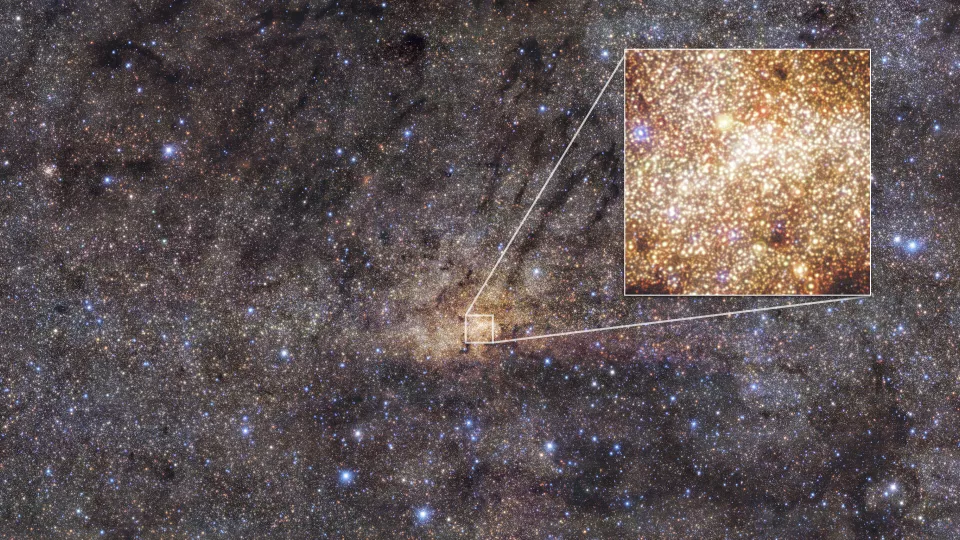In the study, which is published in the scientific journal The Astrophysical Journal Letters, the Lund researchers studied a group of stars located in the nuclear cluster that forms the heart of the galaxy. These three stars are difficult to study because they are located extremely far away from our solar system and are hidden behind enormous clouds of dust and gas that block the light. The fact that the area is also covered in stars makes it very complicated to distinguish individual stars. In a previous study, scientists have hypothesised that these particular stars at the centre of the Milky Way could be unusually young.
"We can now confirm this. In our study, we have managed to date three of these stars as relatively young, at least for us astronomers, with ages ranging from 100 million to about 1 billion years. This can be compared to the sun, which is 4.6 billion years old," says Rebecca Forsberg, an astronomy researcher at Lund University.
The nuclear star cluster has mainly been seen as a very old part of the galaxy, which it is. But the fact that the researchers now find such young stars indicates that there is also active star formation in this ancient component of the Milky Way. Dating stars 25 000 light years from Earth is not something you do in a hurry. The researchers used high-resolution data from the Keck II telescope in Hawaii, one of the world's largest telescopes with a 10-metre diameter mirror. For further verification, they then measured how much of the heavy element iron was present in the stars. Elements are important for tracing the evolution of the galaxy, as the theories astronomers have about how stars form and galaxies evolve indicate that younger stars have more of the heavy elements, as heavy elements are increasingly formed over time in the universe. To determine the amount of iron, the astronomers observed the stars' spectra in infrared light, which is the part of the light spectrum that can more easily pass through the dust-dense parts of the Milky Way, compared to optical light. It turned out that the iron levels varied greatly, which surprised the researchers.
"The very scattered iron levels could indicate that the innermost parts of the galaxy are incredibly inhomogeneous, i.e. unmixed, which is something we did not expect and says something about how the centre of the galaxy behaves, but also what the early universe may have looked like," says Brian Thorsbro, astronomy researcher at Lund University.
The study is important for a better understanding of the early universe and how the very centre of the Milky Way works. The results can also be used to inspire further and future explorations of the centre of the galaxy. But also to continue developing models and simulations of galaxy and star formation.
"Personally, I find it very exciting that we can now study the very centre of our galaxy in such great detail. Out here in the galactic disc where we are, these types of measurements are standard, but have previously been a dream goal for more distant and exotic parts of the galaxy. We can learn a lot about how our home galaxy formed and evolved with these studies," says Rebecca Forsberg.
Besides Lund University, the following organisations and universities have participated in the study: Observatoire de la Côte d'Azur, The University of Tokyo, Observatoire de Paris, University of California Los Angeles, Miyagi University of Education.
The study is published in the journal The Astrophysical Journal Letters: ”A Wide Metallicity Range for Gyr-old Stars in the Nuclear Star Cluster”
Rebecca Forsberg's profile in Lund University Research portal.
Brian Thorsbro's profile in Lund University Research portal.



